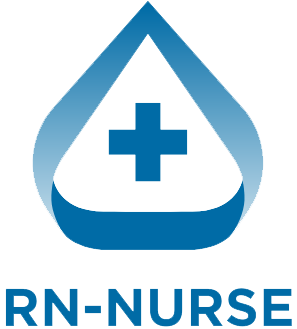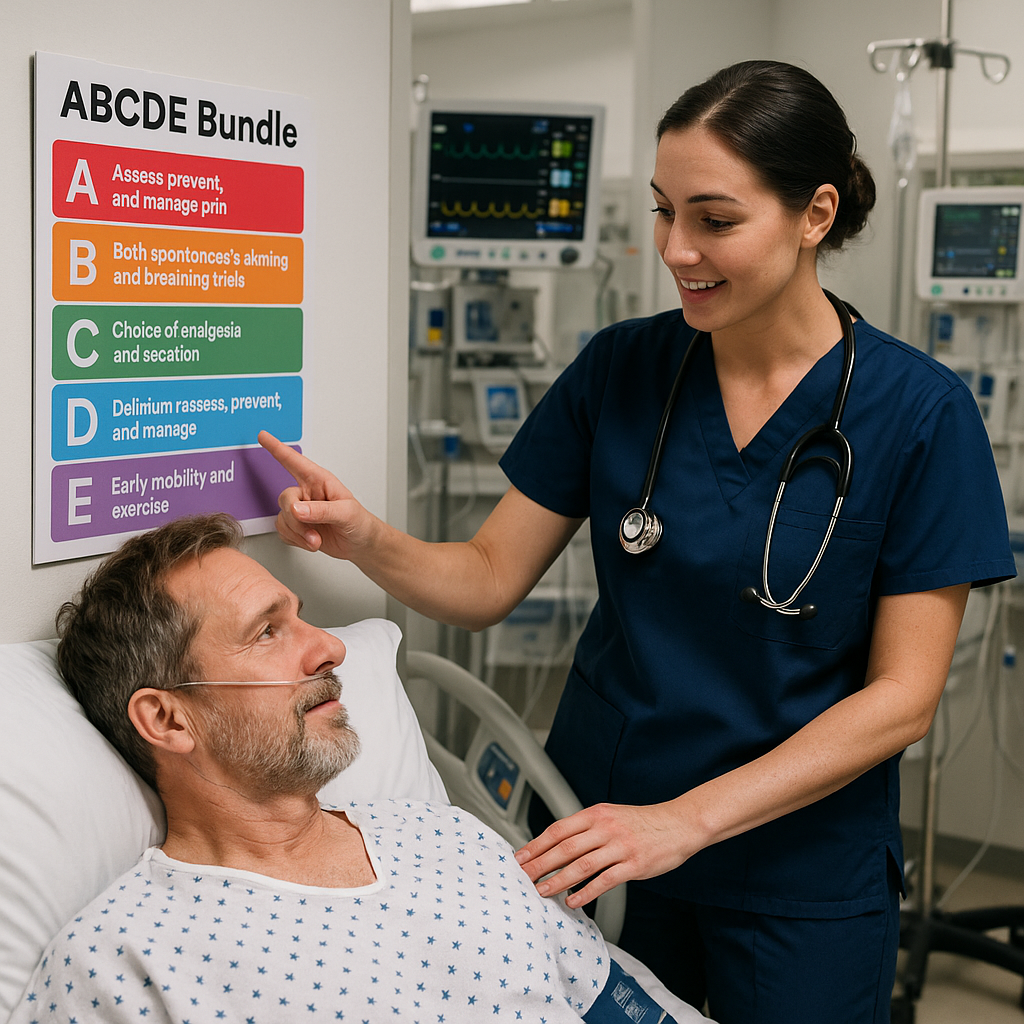In the intensive care unit (ICU), patients face many risks—one of the most serious is delirium. It can lead to longer hospital stays, complications, and even long-term cognitive decline. That’s where the ABCDE bundle comes in. This evidence-based approach helps ICU nurses and care teams improve outcomes by focusing on daily care practices that protect both body and mind.
Let’s break down what the ABCDE bundle is and how it can help you as a nurse in the ICU.
What Is the ABCDE Bundle?
The ABCDE bundle is a set of best practices aimed at improving ICU care. It stands for:
- A – Awakening: Assessing and reducing sedation.
- B – Breathing trials: Daily assessment for ventilator weaning.
- C – Coordination of care and communication.
- D – Delirium monitoring and management.
- E – Early mobility and exercise.
This bundle promotes a team-based approach to reduce the risk of delirium, improve mobility, and shorten ICU stays.
A – Awakening Trials
Light sedation or frequent breaks from sedation can improve brain function and reduce ICU delirium. Nurses use daily sedation interruption (DSI) to check if the patient can safely wake up and interact.
Tip: Collaborate with providers and respiratory therapists before beginning a trial. Always follow hospital protocols.
B – Breathing Trials
Daily spontaneous breathing trials (SBTs) help determine if a patient is ready to come off the ventilator. This reduces the risk of complications from long-term ventilation.
Role of Nurses:
- Monitor oxygen levels and breathing patterns.
- Coordinate with respiratory therapy.
- Communicate progress with the care team.
C – Coordination of Care and Communication
Success depends on a team: nurses, doctors, respiratory therapists, and physical therapists must communicate clearly and update care plans often.
Use daily rounding or structured checklists to keep everyone informed and on the same page.
D – Delirium Monitoring and Management
Delirium is common in the ICU, but often goes unrecognized. Nurses should use validated tools like the CAM-ICU (Confusion Assessment Method for ICU) to check patients regularly.
Tips to manage delirium:
- Reorient the patient often.
- Reduce noise and lights at night.
- Promote natural sleep.
- Avoid unnecessary medications like benzodiazepines.
E – Early Mobility and Exercise
Even in the ICU, getting patients to move as early as possible improves outcomes. Early mobility reduces muscle loss, helps circulation, and shortens hospital stays.
Your Role:
Work with physical therapy and get patients sitting up, dangling legs, or walking if possible—even while on ventilators.
Why It Works: Real Patient Benefits
Implementing the ABCDE bundle leads to:
- Lower rates of ICU delirium
- Shorter time on ventilators
- Improved muscle strength
- Faster recovery
- Lower risk of long-term cognitive issues
According to the Society of Critical Care Medicine (SCCM), consistent use of this bundle reduces both ICU days and complications.
Challenges Nurses Might Face
- Time pressure: The ICU is fast-paced.
- Staffing: You need a team approach.
- Sedation resistance: Some patients may not tolerate waking.
- Patient variability: No two patients respond the same.
Solution: Start with one element at a time and build your routine. Communication is key.
Final Thoughts
The ABCDE bundle in ICU is more than a checklist—it’s a powerful tool to improve care and recovery. As a nurse, you are central to putting it into action. By focusing on awakening, breathing, teamwork, delirium prevention, and early movement, you can truly make a difference in your patients’ outcomes.

